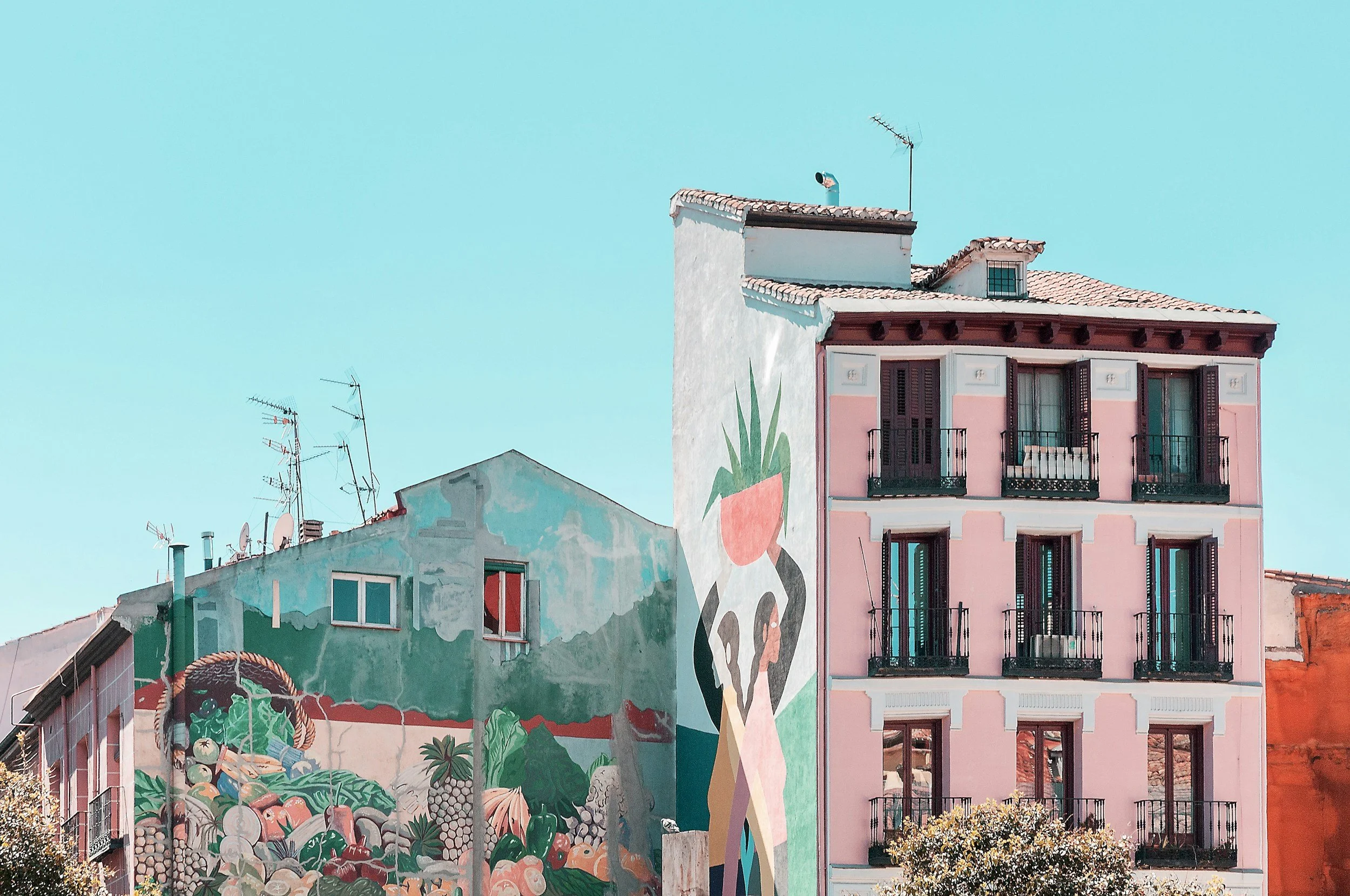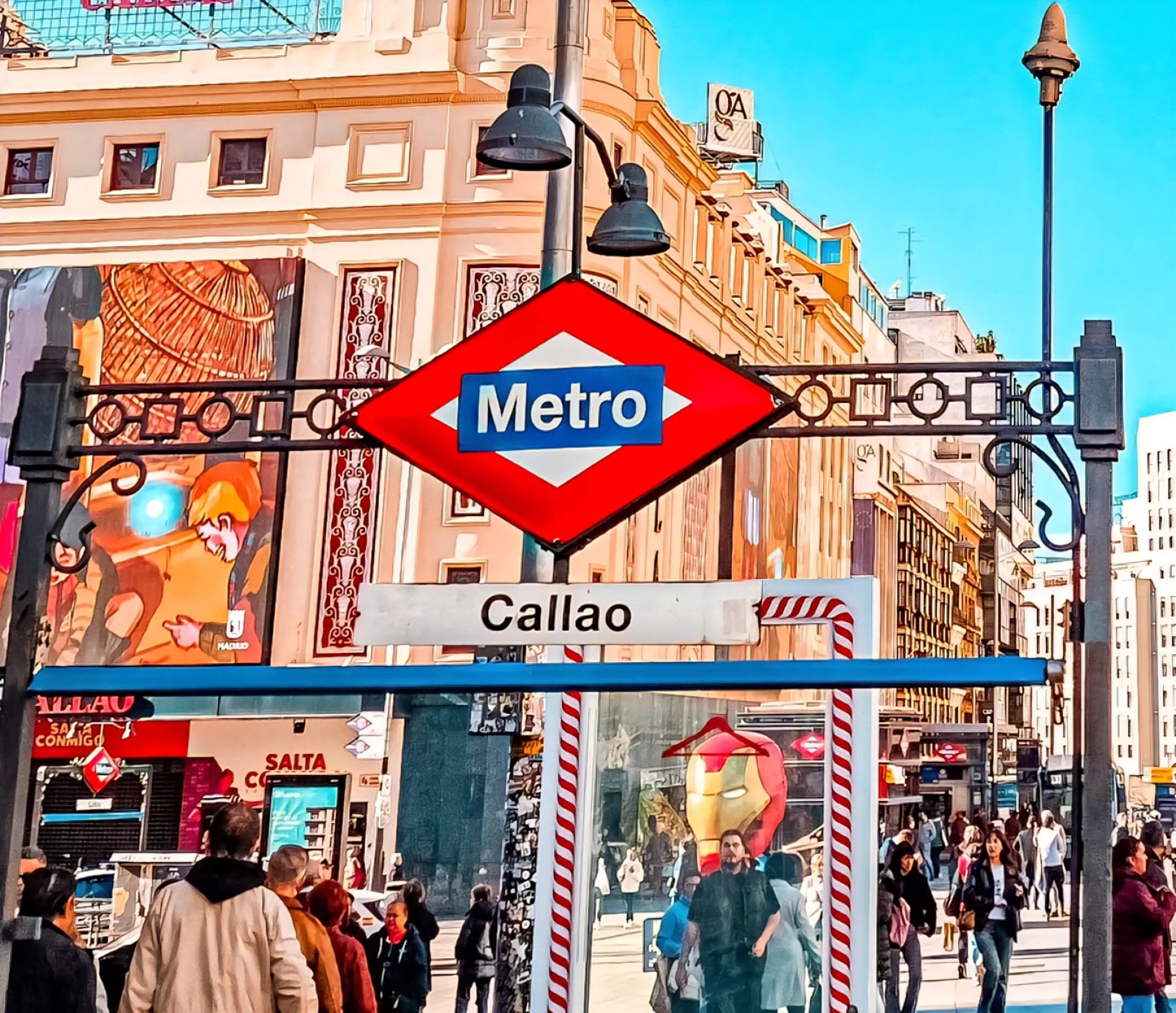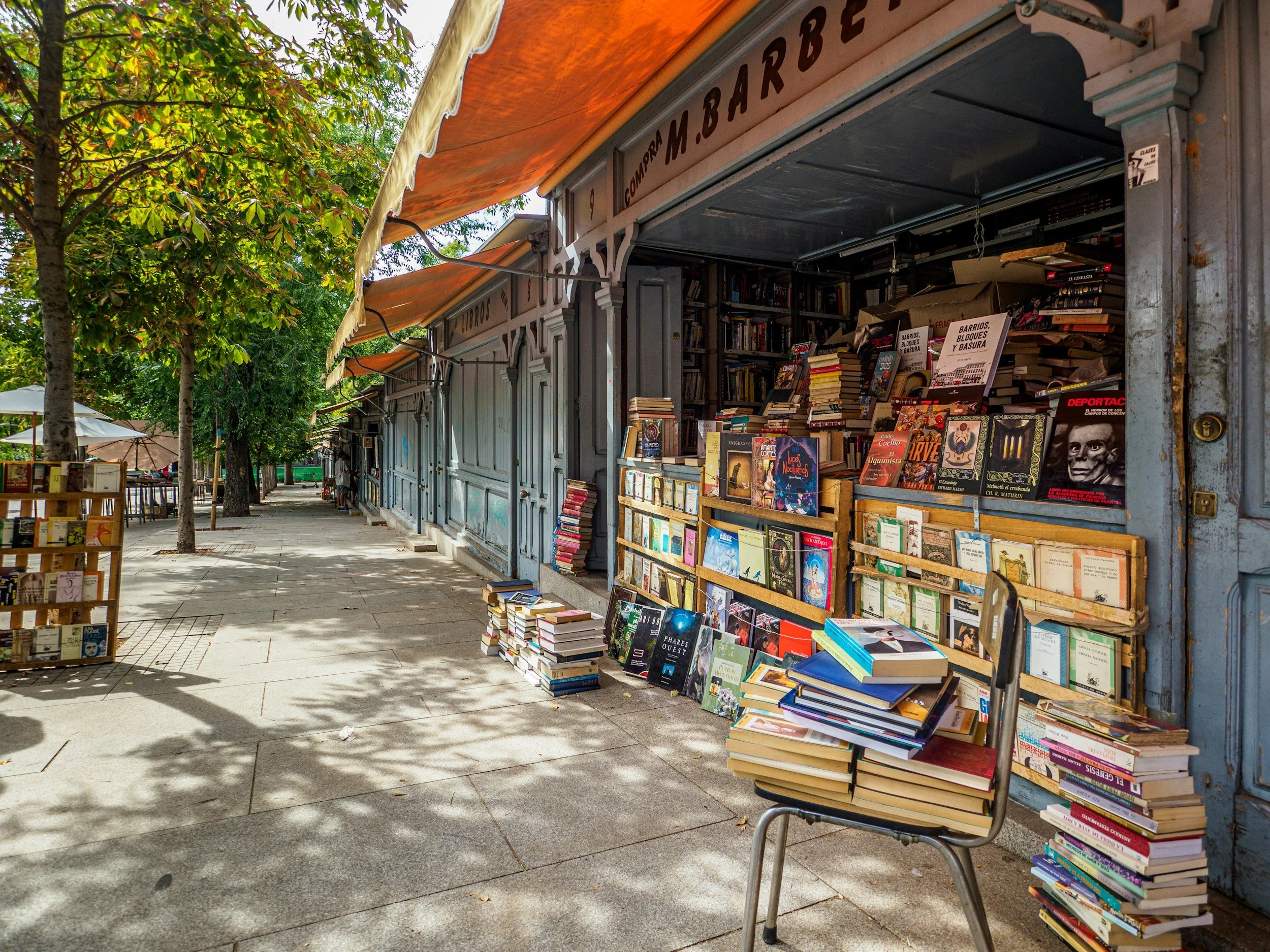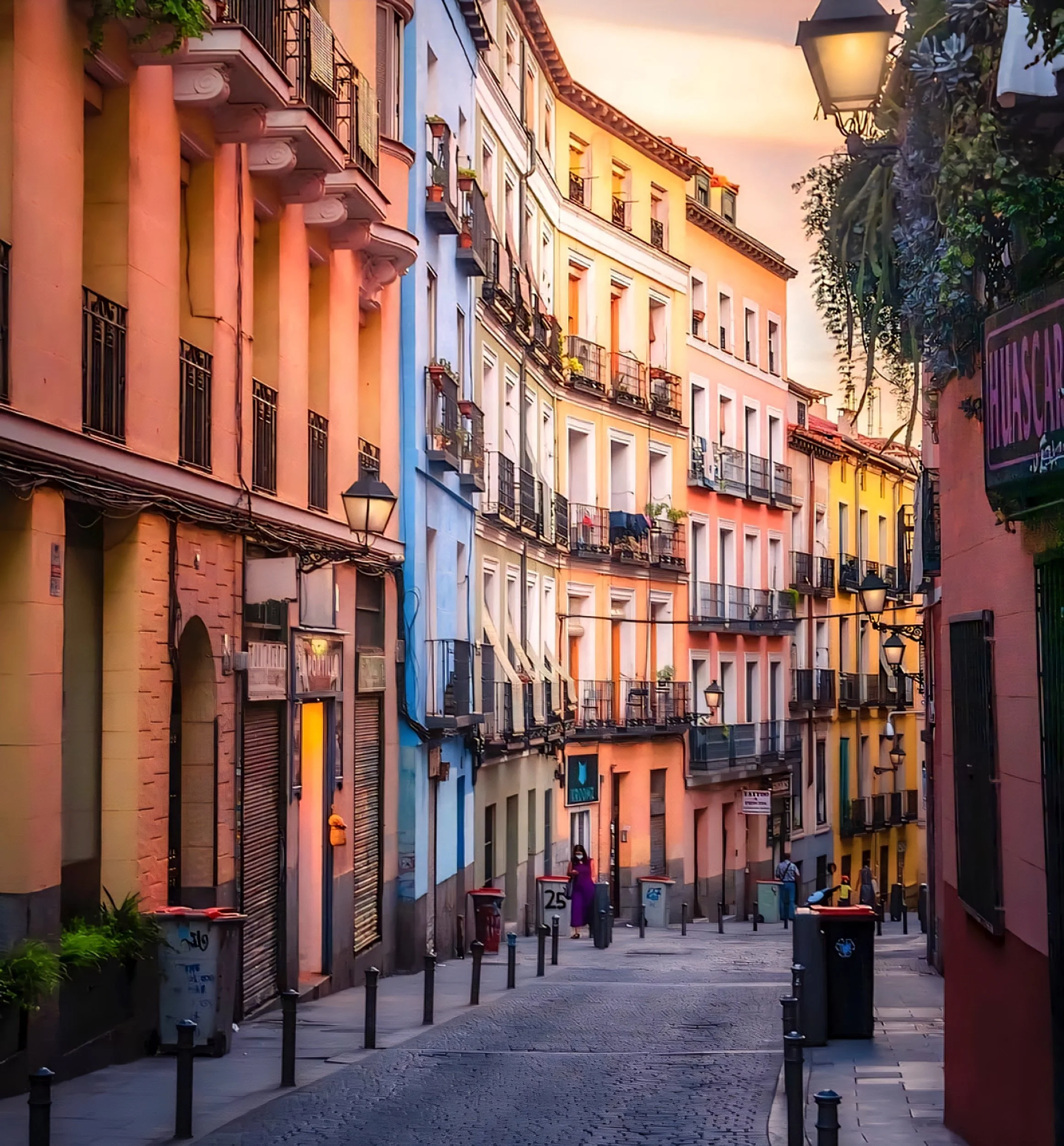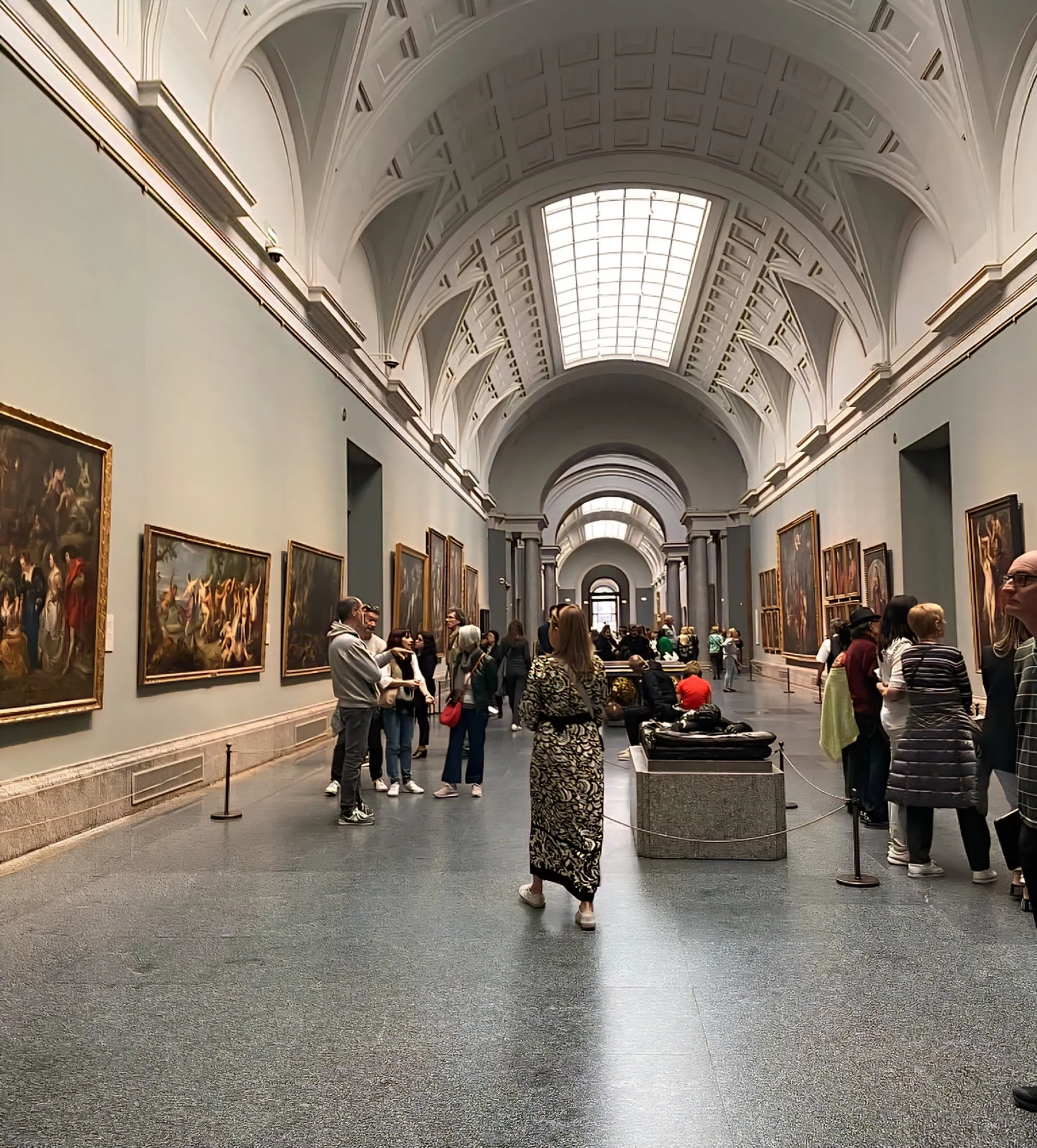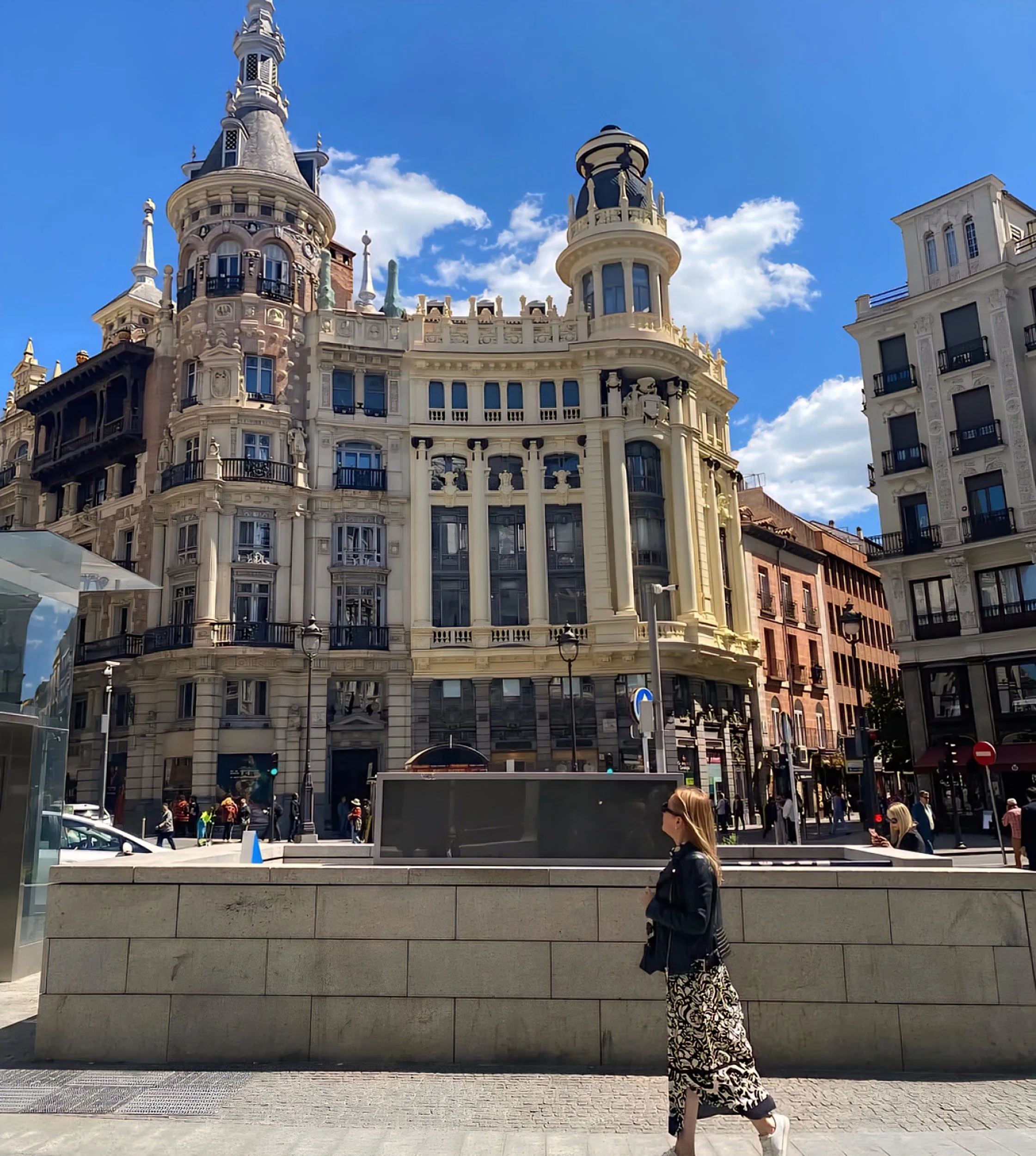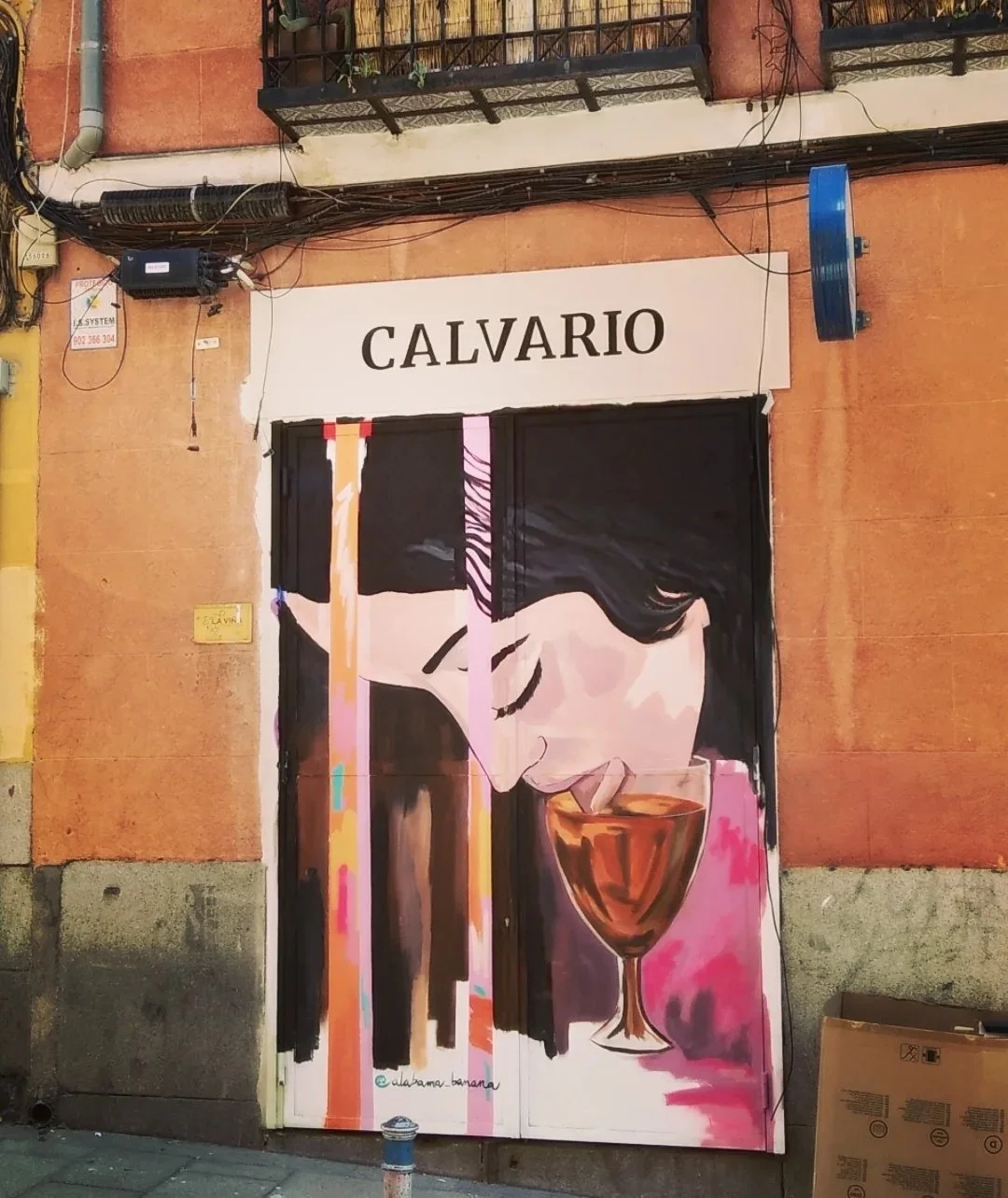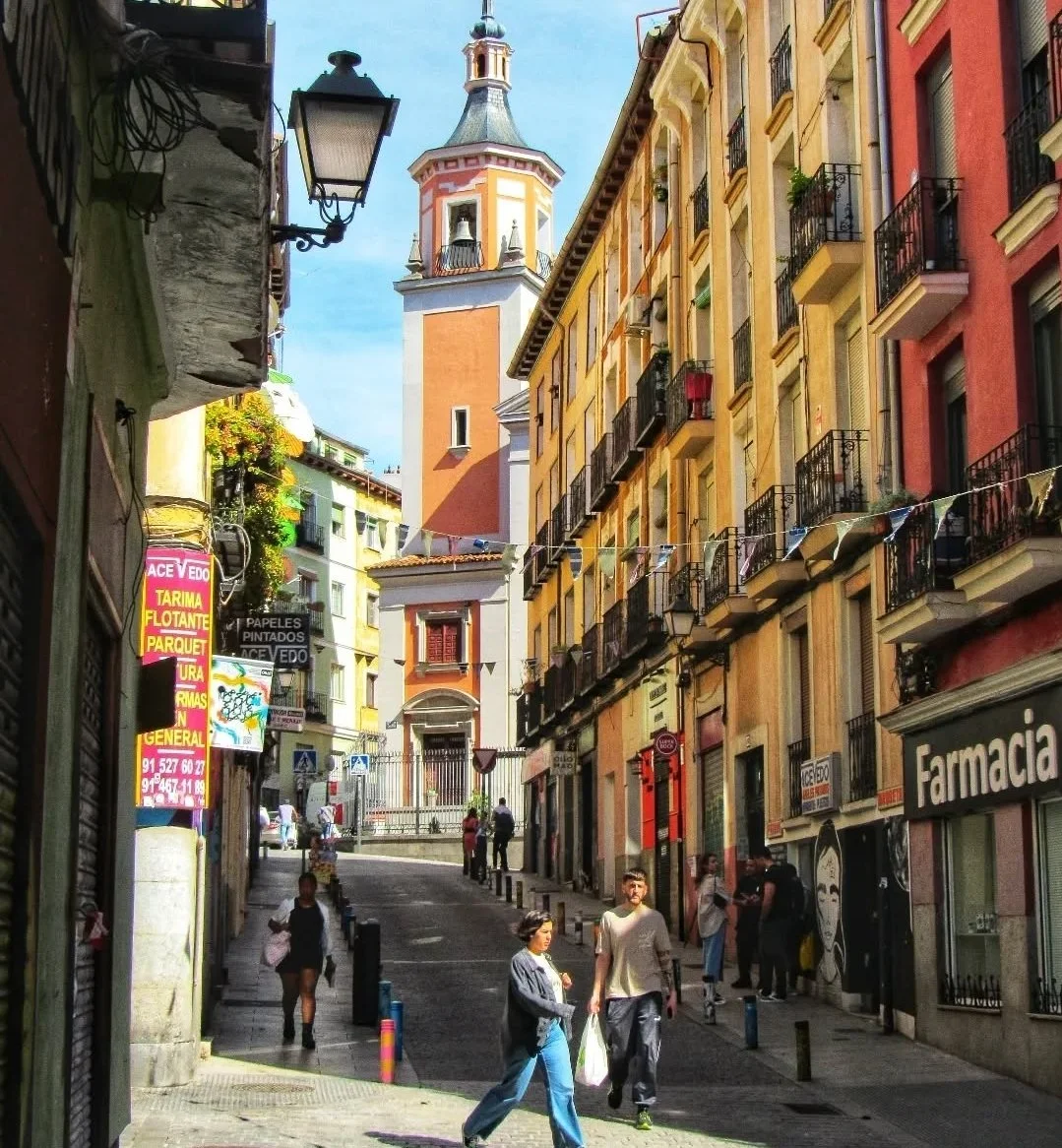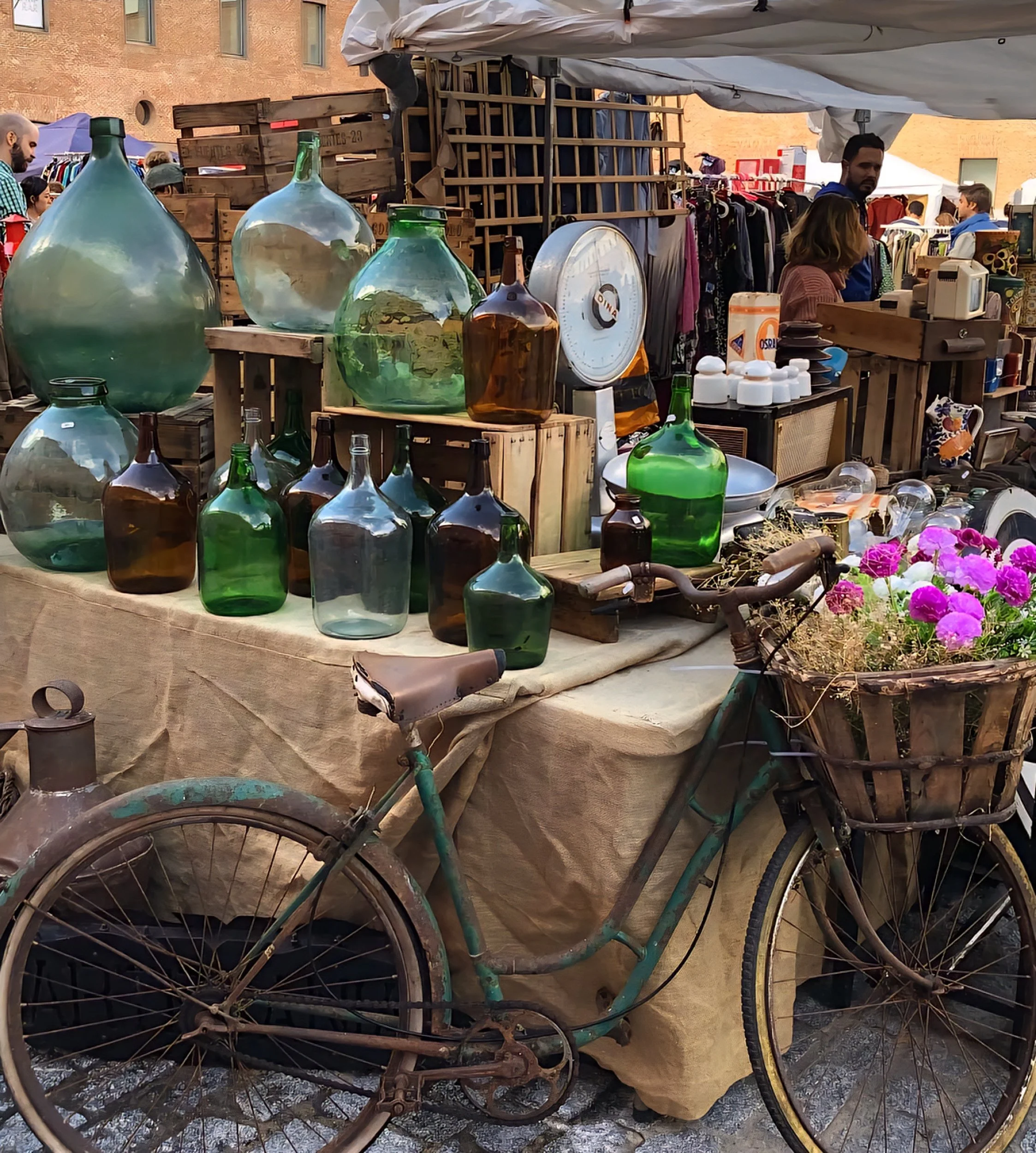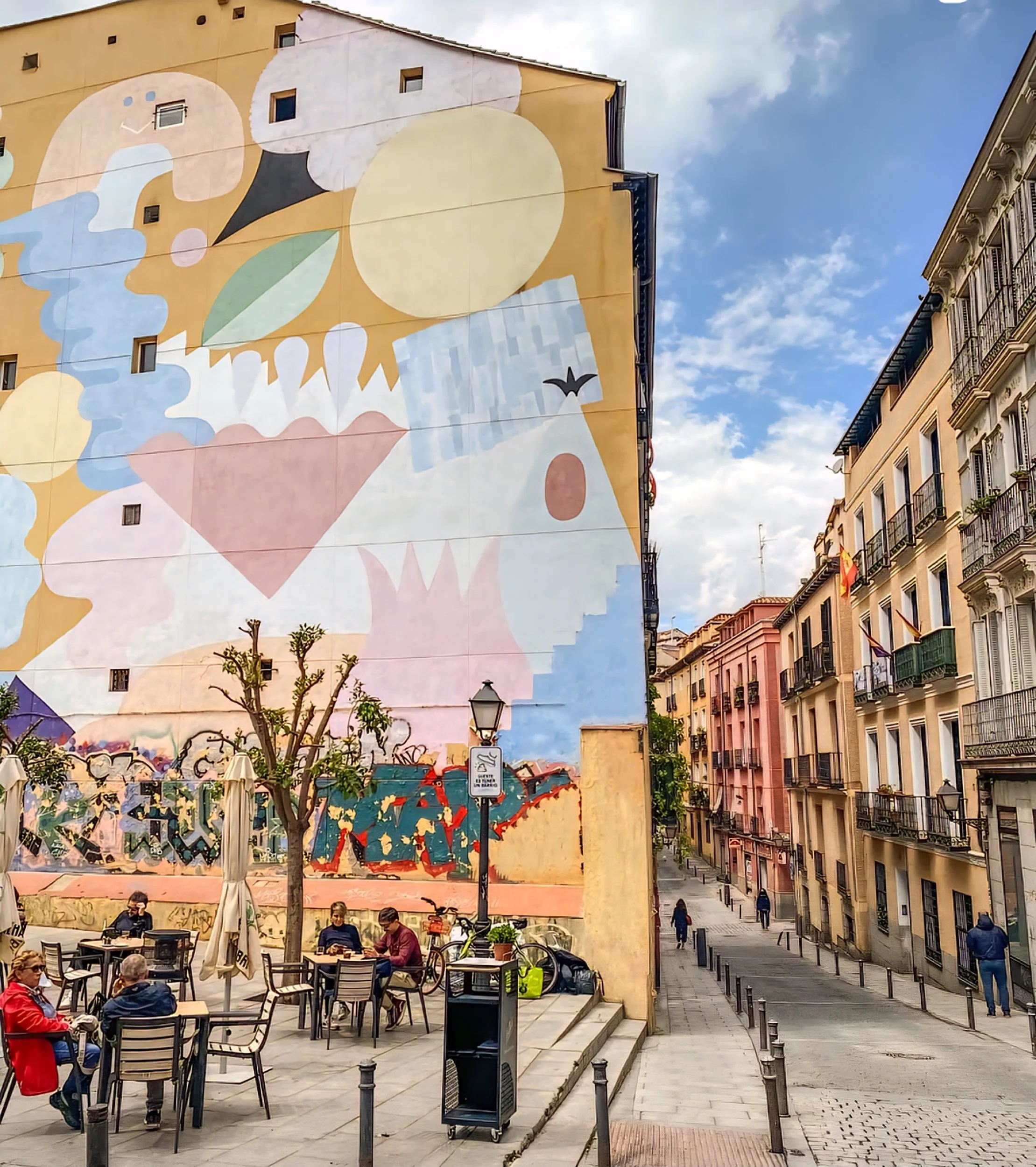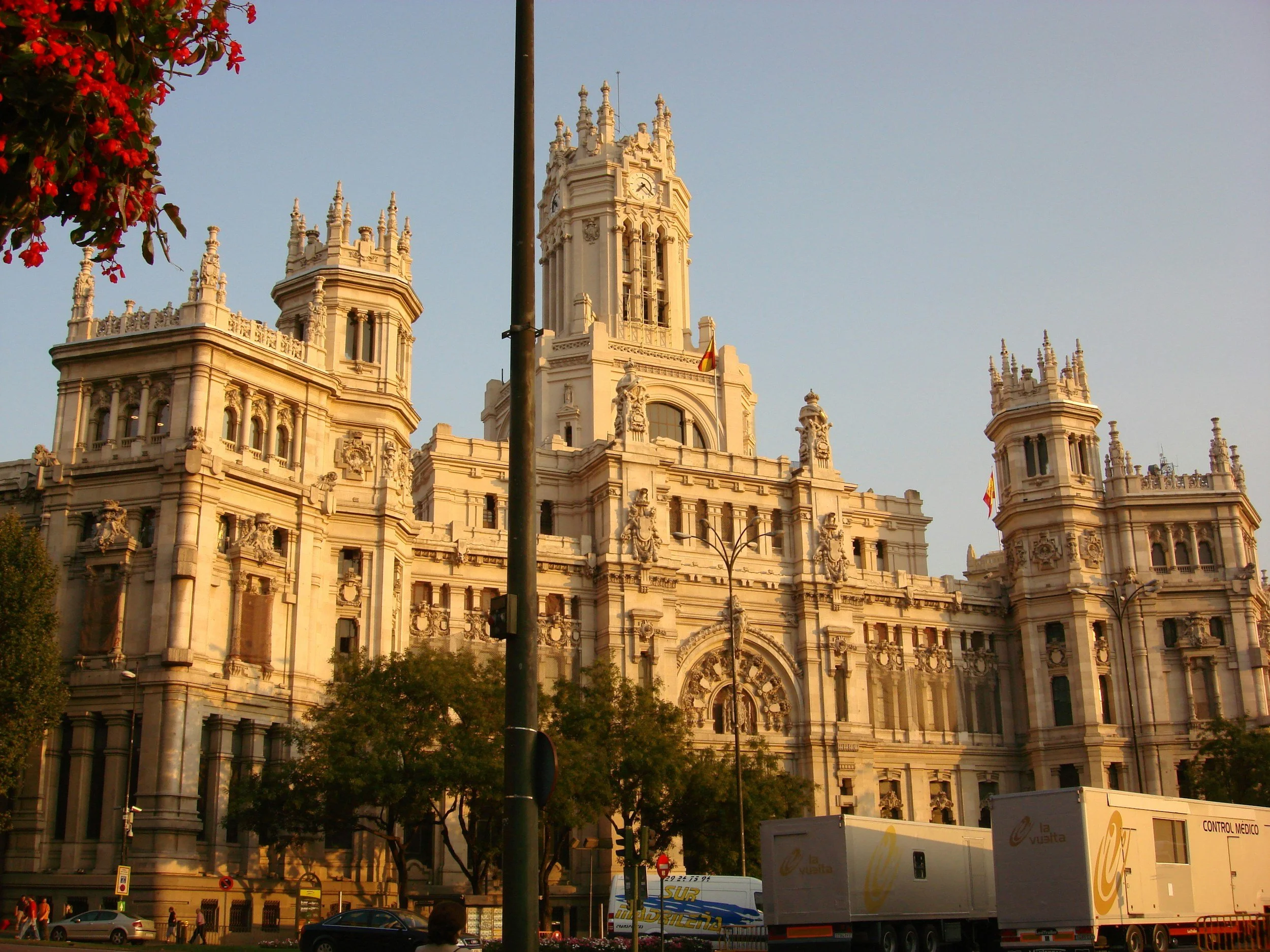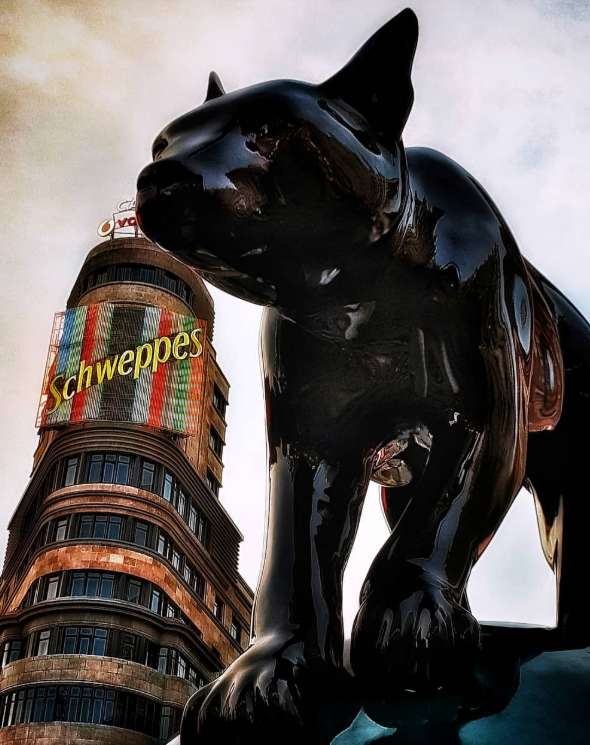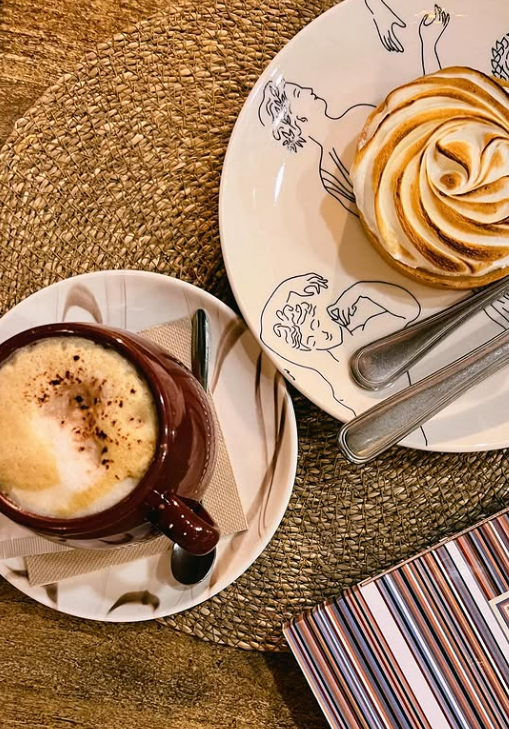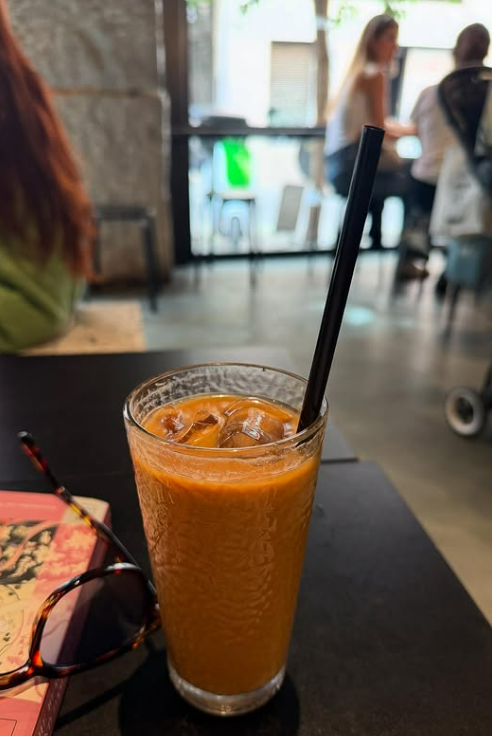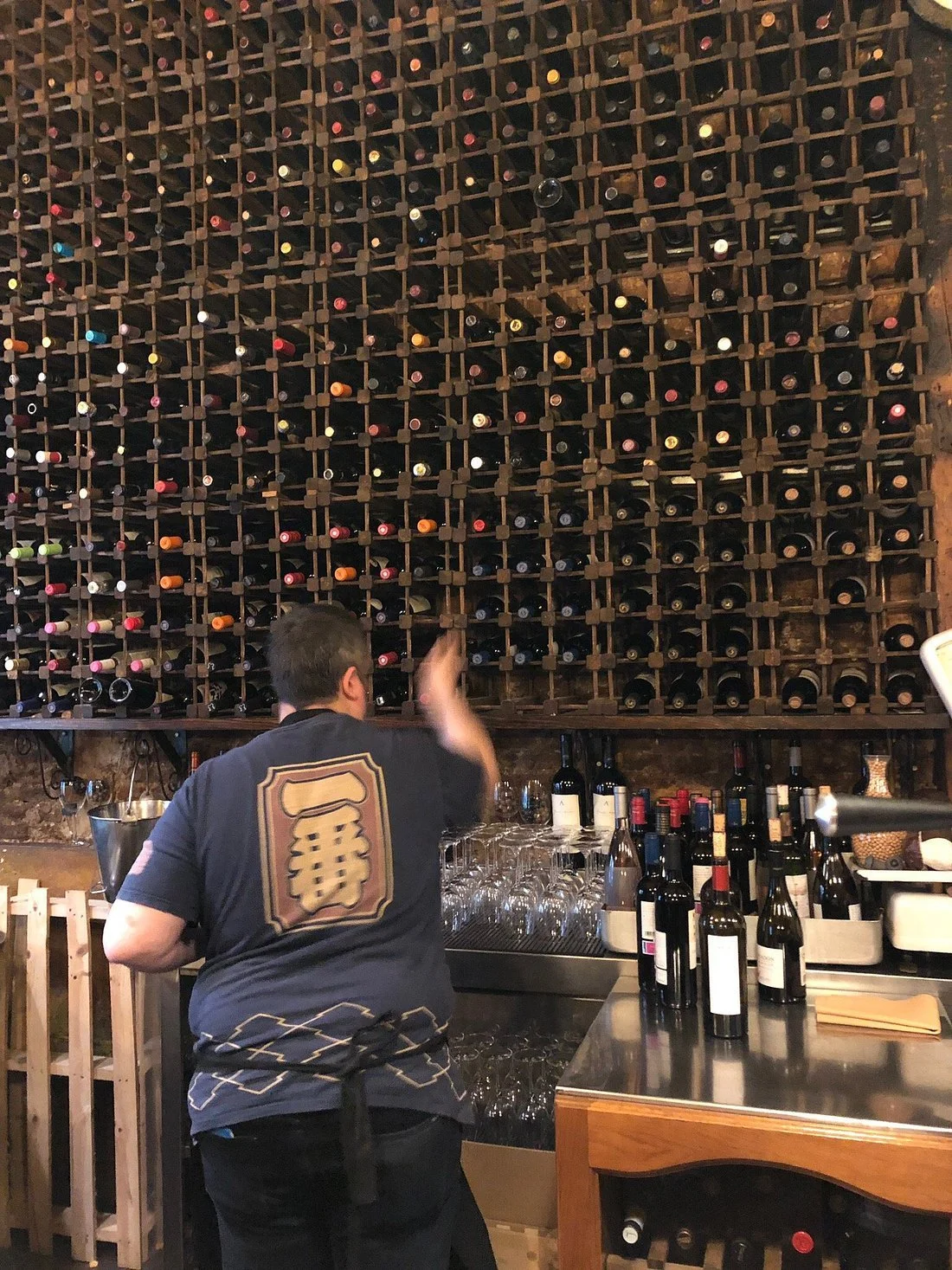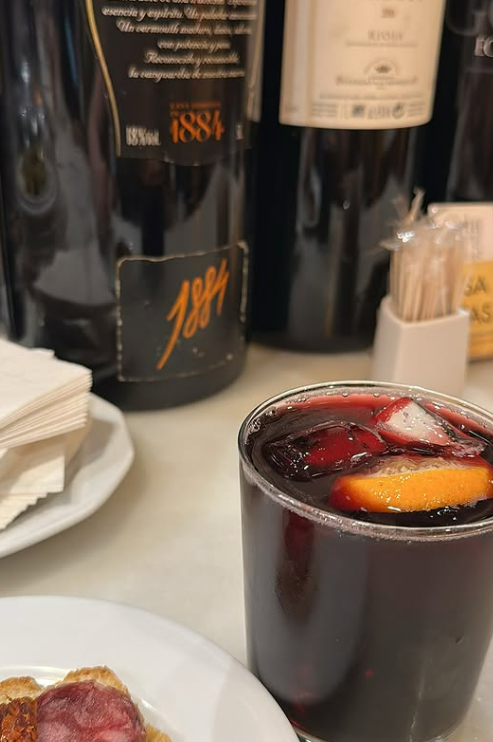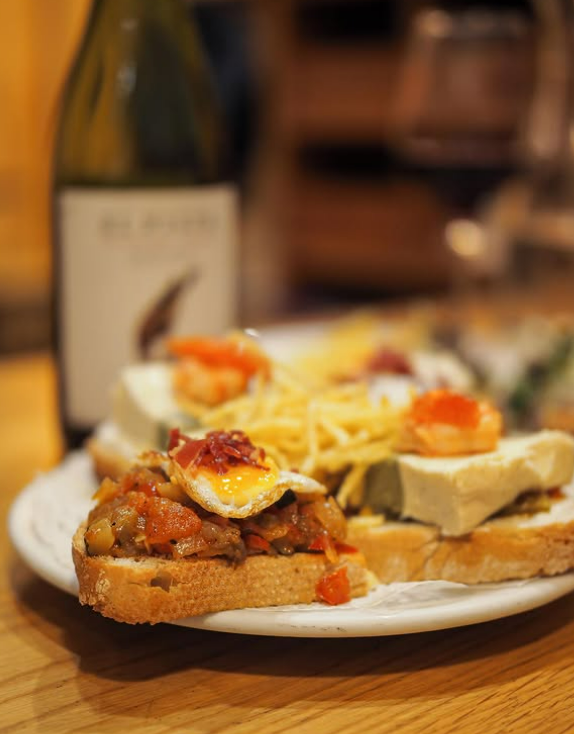Madrid in Autumn: Art, Cafés & Bookshops Solo Travellers will Love
We need to talk about Madrid in autumn. Spain’s capital has a reputation for being fast-moving and lively, but once the summer heat fades and the autumn light sets in, it becomes a surprisingly comfortable city for solo travelers.
This is one of the easiest places in Europe to arrive in and get around. Madrid-Barajas Airport is only about 13 km from the city centre, and getting in is simple. There’s a direct airport metro line (Line 8) that connects to central hubs like Nuevos Ministerios, plus frequent airport express buses that run 24/7 to Atocha Station in about 35 minutes. If you're staying centrally, you'll most likely be in your room or apartment within an hour of landing.
For solo travelers, especially those who prefer some peace and quiet, Madrid is an easy city to settle into. It’s compact enough to walk between neighborhoods, with well-connected public transport for longer distances. The vibe is laid-back… yes, there’s energy, but it’s not overwhelming! Cafés has a slower pace, museums are welcoming to solo visitors, and meals can be as long or as simple as you want them to be.
In autumn (particularly from mid-October to early November) the days are still warm enough for outdoor exploring, but the intense summer heat is gone. Locals start ordering hot drinks again. Parks like Retiro and Parque del Oeste are full of colour, and evenings are cool enough for a scarf or jacket. The big crowds have gone, but everything’s still open.
Madrid also makes a great base if you’re in the mood to stay in one city but still want variety. You can spend a morning walking through quiet galleries, an afternoon in a café-bookshop, and an evening eating tapas solo at the bar without feeling out of place. It’s not overly curated, but it’s full of character. You don’t need a list of “top 10 things to do.” You just need to arrive, and start walking. Madrid is easy that way!
In this guide, we’ll focus on the version of Madrid that works for this kind of travel: slower, quieter, and more grounded. Where to stay, how to get around, where to walk, where to eat well, and how to build days that don’t feel scheduled but still feel full.
Because once autumn hits, Madrid isn’t just a good city break - it’s a genuinely enjoyable place to be on your own.
Getting to Madrid: Airport, Train & Bus Tips for Travelers
Madrid is one of the easiest cities in Europe to reach, whether you’re arriving by plane, train, or bus. Its location (right in the centre of Spain) makes it a natural hub, and public transport into the city is straightforward even if it’s your first time here.
By air
Madrid-Barajas Adolfo Suárez Airport (MAD) is the main international airport and is located just 13 km from the city centre. Most European cities offer direct flights, and there are also frequent connections from North America and other parts of the world.
Once you land, getting into the city is easy:
The Airport Express Bus runs 24 hours a day and stops at major points like Atocha Station, Plaza de Cibeles, and O’Donnell. It costs around €5 and takes about 30–40 minutes, depending on traffic.
The metro (Line 8) connects the airport to the city’s metro network. You can transfer at Nuevos Ministerios and reach most central neighbourhoods within 30 minutes.
Taxis are fixed-rate from the airport to the centre (around €30), which is useful if you’re arriving late or carrying luggage.
By train
If you’re already in Spain or travelling from Portugal or the south of France, Madrid is well connected by train. Atocha and Chamartín are the two main stations, with high-speed AVE trains arriving regularly from Barcelona, Seville, Valencia, and Málaga. Trains are clean, fast, and generally easy to book online in advance (via Renfe).
By bus
Madrid’s main long-distance bus terminal is Estación Sur. Companies like Alsa and Flixbus run regular routes from other Spanish cities and neighbouring countries. It’s not the most scenic way to arrive, but it’s affordable and reliable.
Once you’re in the city, public transport is simple and solo-friendly. The metro is intuitive, buses are regular, and walking is often the nicest way to get around - especially in autumn, when the weather is mild and the streets are quieter.
Where to Stay in Madrid for Solo and Slow Travelers
Madrid’s a big city, but it’s surprisingly easy to navigate once you’ve landed in the right barrio. For solo travelers especially, where you stay can shape the whole feel of your trip. The goal is to be central enough to walk to the places you’ll want to explore, but quiet enough to retreat when you want time to yourself.
The good news: Madrid has plenty of these pockets. Small, characterful neighborhoods where daily life unfolds more slowly, and where you’ll find independent cafés, secondhand bookshops, and park benches used by locals - not just tourists. You’ll want to stay somewhere that feels safe, walkable, and human-sized - and these areas deliver that without losing connection to the city’s cultural heart.
Salesas & Justicia: Walkable, Stylish, and Close to Culture
If we had to pick just one area to recommend, it might be here. Salesas and Justicia sit between Chueca, Recoletos, and Malasaña, with leafy side streets, quiet charm, and an almost Parisian feel in places.
This part of the city is ideal if your days tend to begin with coffee, include a gallery or bookshop, and end somewhere with a glass of wine and no rush. You’ll find independent boutiques, tucked-away bakeries, and a growing mix of concept stores and long-standing tabernas. Best of all, it’s within walking distance to Retiro Park, Museo del Prado, and Gran Vía, without being in the thick of any of them.
A favorite stay here is Only YOU Boutique Hotel on Calle Barquillo. It’s set inside a 19th-century mansion but feels warm and unpretentious with wood floors, quiet lounges, and the kind of lighting that makes you want to stay for a while. There’s an in-house café if you want an easy morning start, and the surrounding streets are peaceful in the early hours, perfect for a solo stroll before breakfast.
A short walk away, you’ll find Hotel Urso, sitting just on the border between Chamberí and Justicia. This one leans slightly more traditional: elegant but low-key, with well-kept rooms and common spaces that feel more like a private apartment than a hotel. It’s the kind of place where you can return after a day out and feel like you’re home again.
Chamberí: Quieter Streets and Local Pace
For something more residential (but still walkable) Chamberí is worth looking at. This is one of Madrid’s more overlooked areas, but for slow travelers, that’s part of the appeal. There are fewer hotels here, which means more space for family-run restaurants, corner fruit stands, and locals walking their dogs in the early evening.
The streets here are broader, quieter at night, and often lined with historic buildings with real charm. If you’ve visited Madrid before and want a different pace (or just prefer staying somewhere that doesn’t feel touristy…) Chamberí is a solid option. You're still close to metro lines and can reach Retiro or Lavapiés in 15–20 minutes.
Lavapiés & Antón Martín: Artsy, Multicultural, Lively
If you’re more drawn to a creative, multicultural side of Madrid, Lavapiés might be a better fit. This neighborhood is full of character (some streets are scruffy, others beautifully renovated) but the energy here is younger, more experimental, and deeply rooted in local life.
Lavapiés is home to artists, students, international communities, and a lot of tiny, independent bars and galleries. It’s also well-connected by metro and only about a 10–15 minute walk to Reina Sofía, Atocha Station, and La Casa Encendida.
For accommodation, CoolRooms Palacio de Atocha is a boutique option nearby that’s worth considering. Set in a renovated palace, it offers large, bright rooms and a peaceful inner courtyard - ideal if you like the idea of staying near the action, but want a quiet place to retreat in the afternoon with a book or a glass of wine. The hotel is a short walk from Antón Martín market, where you can browse fresh produce or stop for a casual lunch.
Malasaña & Conde Duque
For travelers who enjoy design shops, vintage bookstores, creative cafés and a slightly younger energy, Malasaña and Conde Duque are also worth a look. These areas are not as quiet as Salesas or Chamberí, but they’re safe, central, and full of personality.
If you stay here, you’ll have easy access to small galleries, community theatres, and some of the best specialty coffee spots in Madrid. It’s also a great base if you’re the kind of traveler who likes to wander with no particular destination - just following streets and seeing what appears.
That said, some corners of Malasaña can get noisy at night, so it’s worth choosing a hotel or apartment on a side street rather than a main one. Look for places near Plaza de San Ildefonso or Conde Duque cultural centre, which is close enough to everything, but far enough from the late-night buzz.
Explore Madrid in Autumn: A Walkable, Slower Season
Once October settles in, Madrid becomes noticeably more comfortable to explore on foot. The heat breaks, the sunlight softens, and walking feels like something you want to do - not just something you have to do between metro stops.
There’s a shift in pace too. Streets that felt rushed in summer now move a little slower, and cafés open their windows again. The crowds thin out, especially in the mornings.
Retiro Park is still one of the best places to start the day. You’ll see locals walking their dogs, people sitting quietly with takeaway coffee, and couples pushing prams under the trees. The paths are wide and shaded, and in late autumn, the sycamores turn yellow and rust. If you bring a book, you won’t be the only one. The Palacio de Cristal, with its glass walls and seasonal exhibitions, is a good place to stop - less about sightseeing, more about pausing.
If you walk west in the late afternoon, Templo de Debod is a solid spot to end the day. Not a hidden gem by any means, but not overcrowded either - not in autumn. From the upper platform, you get a view over the city, and if the weather is clear, you’ll see the sky shift pink and orange as the sun sets. People come here to sit quietly. No music or loud crowds. Just the end of the day in a big city that somehow doesn’t feel like one.
For something longer, follow the Madrid Río path. It’s a landscaped stretch along the Manzanares River, with pedestrian paths, small bridges, and local parks. You’ll pass by weekend football games, street performers, and families on bikes. It connects neighborhoods like Arganzuela, Carabanchel, and La Latina, giving you a different, more local feel for the city. It’s especially good if you’ve been in the centre for a few days and need a bit of breathing space.
Walking in Madrid in autumn doesn’t feel like you’re checking off sights. It just feels like you’re in the right place at the right time - without needing a plan.
Best Art and Cultural Spots in Madrid for Autumn Travel
Madrid is a city with big museums, but in autumn, it’s much easier to enjoy them without feeling rushed. You don’t need to book everything in advance or plan out your whole day. You can just decide where to go that morning, take your time, and stop for coffee whenever you feel like it.
If you’re visiting solo, this works especially well. No one’s setting the pace but you.
The Prado is still a good place to start - not because it’s famous, but because it really is worth seeing. If you go early, you’ll avoid the bigger groups and have more space to move around. You don’t need to see the whole thing. Focus on one or two rooms. The Goyas and Velázquez portraits are always a good choice. Even just sitting quietly in front of one painting for a while can be a better experience than rushing through 30.
Right nearby, the Thyssen-Bornemisza is a smaller, calmer museum that mixes everything from Renaissance to modern art. It’s easy to get around, and if your brain starts to feel full, there’s a café where you can sit and look out at the trees in the boulevard (especially nice in late October when the leaves start to turn!).
If you prefer modern and contemporary art, Reina Sofía has more space and a completely different feel. Yes, Guernica is there, but there’s also photography, political art, installations - some of it heavy, but thought-provoking. It’s the kind of place where you can spend a couple of hours, then take the lift to the rooftop terrace, and just sit with the view for a bit before heading out.
But you don’t have to stick to the big museums.
We always end up spending time at La Casa Encendida in Lavapiés. It’s one of those places that’s hard to describe… a bit of gallery, a bit of community centre, a bit of café. You might walk in on a film screening or a local artist pop-up. It’s relaxed and open to everyone. No pressure to buy a ticket or stay long.
Further south, Matadero Madrid has a similar feel but in a much bigger space. It used to be a slaughterhouse, but now it’s home to rotating exhibitions, live events, and design shops. On weekends, locals come here just to hang out, especially in the outdoor areas around the café. You can bring a book, order something small, and not feel like you’re supposed to be anywhere else.
Best Artisan Cafés and Bookshop Cafés in Madrid for a Slow Solo Break
If you’re spending a few days walking around Madrid in autumn, you’ll want a few places where you can just stop for a while. Somewhere warm, quiet, and welcoming - ideally with good coffee and maybe a bookshop attached.
Luckily, Madrid is full of spots that work well for solo travelers. Places where you can sit and relax, open a book, write, or just take a proper break. Whether you’re in Malasaña, Chamberí, or Lavapiés, there’s always a calm corner to find.
In Malasaña, HanSo Café is one of the city’s best-known specialty coffee shops, and for good reason. The coffee is excellent, the space is unfussy but comfortable, and the vibe is slow and steady. You’ll usually see a mix of regulars and visitors reading or working quietly. It’s a good spot to start the morning or reset mid-afternoon.
Also in Malasaña, Toma Café is another reliable stop. It’s smaller and gets busy at peak times, but if you go in the late morning or early afternoon, you’ll usually find a seat. The filter coffee and small bites are solid, and the atmosphere is nice.
If you prefer your coffee with a book, head to Cafebrería Ad Hoc, near Chamberí. It’s a true hybrid: bookshop, café, and occasional event space. The crowd is mostly locals, and the tables are spaced out enough that you won’t feel on display if you’re alone. It's a nice place to read or journal for a while.
Over in Barrio de las Letras, La Fugitiva is a slightly messier but very charming bookshop café. The furniture is mismatched, the shelves are full, and the coffee is strong. It’s not trendy, but it’s real!
In Lavapiés, Swinton & Grant combines a bookshop, café, and small gallery space. It’s well tucked-in, and you’ll mostly find locals here reading, chatting, or just passing time. If you’ve spent the morning walking through Reina Sofía or La Casa Encendida, it’s a great place to stop and reset.
None of these cafés are loud or fast-moving. You can sit on your own, take your time, and not feel out of place. Which, especially when you’re travelling solo, makes all the difference.
Where to Eat Solo in Madrid This Autumn: Tapas, Wine & Local Spots
Madrid is one of those cities where eating solo doesn’t feel strange. You don’t need to sit at a table for two or pretend to be busy on your phone. Most people eat standing or sitting at the bar anyway - ordering one dish at a time, chatting with the bartender, or just enjoying the food quietly.
And in autumn, the experience gets even better. It’s not as hot, the streets are calmer, and restaurants and tabernas feel less hectic. You can actually hear yourself think…
Where to start if you're new to tapas
If you haven’t done the tapas thing before, don’t worry. There’s no right or wrong way. In most places, you just walk in, grab a stool or stand at the bar, and order a drink. Some bars will bring you a small tapa automatically (like olives or a slice of tortilla), but most offer a short list of plates you can order separately: small, affordable, and designed to be shared or eaten solo.
For a classic tapas route, start in La Latina, especially around Cava Baja and the small streets off it. These are some of Madrid’s best-known tapas spots, and while they can feel touristy in summer, autumn brings a different vibe. It’s mostly locals again. You’ll find the same menus, but with seasonal updates and without the loud groups or long waits.
Try Taberna Tempranillo - a narrow, atmospheric place with a wall full of wine bottles and a short but thoughtful food list. Their mushroom croquetas, if available, are worth ordering. Casa Lucas, a few doors down, is a little brighter, with more creative takes on traditional plates. You might find roasted pumpkin with goat cheese or pisto manchego served warm with egg.
It’s common to order just one or two dishes and then move to the next place. You don’t need to plan a full tapas “crawl” - just follow your appetite. If you’re enjoying the food and the mood, stay. If not, there’s always another spot one street over. Thats the Spanish charm.
Seasonal food in Madrid: what to look for
By late October, menus start to reflect the cooler days. You’ll see more warming dishes and autumn produce - especially in smaller taverns where food is still made daily.
Keep an eye out for:
Setas al ajillo – mushrooms sautéed in olive oil and garlic
Cremas de calabaza or puerro – pumpkin or leek soups, often served with crusty bread
Croquetas de boletus – croquettes filled with seasonal mushrooms
Revuelto de setas y jamón – scrambled eggs with mushrooms and cured ham
Cocido madrileño – a slow-cooked chickpea stew with meats and vegetables, often served in multiple courses
Callos a la madrileña – a rich tripe stew with paprika and chorizo; not for everyone, but very traditional
Tostas – toasted bread with toppings like roasted peppers, anchovies, or cheese
A lot of places update their chalkboard or handwritten menus weekly depending on what’s available at the market. If you’re not sure what to get, just ask: ¿Qué es típico ahora? (“What’s in season right now?”) Most staff are happy to suggest something, and you might end up with a dish you wouldn’t have picked otherwise.
Nice places to eat if you’re travelling solo
Beyond La Latina, some other areas are easy to explore on foot and full of smaller spots where eating alone doesn’t feel out of place.
Huertas, or the Literary Quarter, has a mix of old-school taverns and newer wine bars. It’s quieter at night than other parts of the centre, and there’s more space to settle in. If you’re nearby, Casa González is a deli-style wine bar where you can sit at the counter with a glass of vermouth or sherry and a plate of manchego cheese or jamón ibérico. Nothing fancy, but reliable - and very local.
Lavapiés is less traditional, but that’s part of its appeal. You’ll find lots of international flavours here: North African, South Asian, and Latin American food mixed in with Spanish options. Some tapas bars serve fusion plates like lamb skewers with couscous, curried patatas bravas, or falafel with Spanish-style sauces. It’s more casual and experimental. The kind of place where you can go out, not speak to anyone, and still feel part of something.
If you're up for a mix of food and wandering, you can always head toward Mercado de San Fernando, a local food market in Lavapiés where you can grab small plates, a craft beer or wine, and sit at shared tables. It’s informal, friendly, and ideal for solo visits - no booking, no fuss.
A few more tips for eating out solo in Madrid
Go early or late if you want a quiet corner. Locals usually eat lunch around 2–3 pm and dinner from 9 pm onwards. If you go outside those hours, you’ll usually get a quieter experience.
Don’t be afraid to order slowly. One drink, one dish, then see how you feel. Most places are fine with that.
Sit at the bar rather than a table, unless it’s really empty. It’s more relaxed, and often where the best food is served anyway.
If you want a break from meat-heavy menus, look for taverns with a daily menú del día (often with lighter veggie soups and stews).
Tapas in Madrid aren’t about checking off a food list. They’re a way of moving through the city - pausing when you’re hungry, staying when it’s good, and wandering again when you’re ready.
Planning Your Autumn Trip to Madrid
If you’re travelling solo, it’s easy to settle in here. You don’t need to explain yourself. People eat alone. They sit in cafés for a long time. No one cares if you’re just reading or looking around. You can spend an afternoon in a gallery or do absolutely nothing and still feel like the day had value. That’s not true everywhere, but it works here.
Things are simple to navigate - the airport’s close to the centre, the metro makes sense, and walking is usually the best way to get around anyway. As long as you’ve picked a good base (somewhere like Salesas, Lavapiés, or Chamberí) most things are within easy reach. You’ll quickly get to know the spots you like: a café you’ll want to go back to, a corner for people-watching, a bar where you feel comfortable just ordering one thing and staying for a bit.
This isn’t the kind of trip where you need to keep moving. Some days will feel full. Others won’t - and that’s fine. The galleries will still be there tomorrow. So will the tapas bar down the street.
And that’s the nice thing about Madrid in this season…
Come with one or two things you want to do. Leave space for the rest!
More cozy European Travel Guides
If Madrid in autumn feels like your kind of pace, there’s more where that came from. These guides lean into the same kind of travel — quiet, thoughtful, and just the right amount of slow:
Tuscany’s quiet side — Small hill towns, misty mornings, espresso you sip without rushing. This is Tuscany with room to breathe.
Solo days in Southern France — Stone villages, afternoon markets, and that golden Provençal light. The kind of place you settle into, not just pass through.
Peaceful towns in Denmark — Crisp air, good design, quiet mornings with coffee. Perfect if you want somewhere calming and a little off-centre.
For the quiet travellers — A round-up for introverts and solo wanderers who’d rather find a secondhand bookshop than chase a checklist.
Weekend train trips in Italy — Slow, satisfying journeys you can take by train. Ideal for a long weekend with no rush, no car, and no one else’s schedule.
Northern Spain in autumn — Villages with woodsmoke in the air, forest walks, cider and stew. A beautiful contrast if you’re pairing it with a few days in the city.
FAQs: Travelling to Madrid Solo in Autumn
Is Madrid a good city to travel alone?
Yes — 100%. It’s safe, easy to get around, and no one looks twice if you’re on your own. People eat solo, hang out in cafés, go to museums by themselves. It’s that kind of place. And in autumn, it’s even better — fewer crowds, nicer weather, and a bit more breathing room.
Where’s the best area to stay if I want somewhere central but not hectic?
Salesas and Justicia are good for that. Quiet streets, good coffee, still walkable to everywhere. Chamberí is another one — more local, residential, fewer tourists. Lavapiés is a bit edgier but has great energy, especially if you like art, street life, and multicultural food.
Is autumn a good time to go?
Probably the best time. October still feels warm, but without that heavy heat. By early November, it cools down a bit more, but you’ll still get bright, dry days. It’s good walking weather. You can wear a jacket, sit outside, and not melt.
How many days should I stay?
Four or five is a solid amount. Long enough to settle into a rhythm, try a few galleries and cafés, and have a couple of slower days where you do nothing. If you like the pace, a week isn’t too long.
Can I eat tapas alone or is that awkward?
Totally normal. Most people eat at the bar, and it’s common to just order one or two things and a drink. There’s no pressure to make it a full meal. You can move around, or stay in one spot. No one cares.
Do I need to speak Spanish?
Not really, but a few words help. Most people in the centre speak enough English to take your order or help you out. Just be polite, and if you try even a little Spanish, it goes a long way.
Do I need to book museums in advance?
Only if you're visiting on a weekend or during a public holiday. Otherwise, you can usually just show up. Early mornings are the quietest. A lot of museums also have free entry hours — check ahead if you’re on a budget.
What should I pack for Madrid in autumn?
Layers. A light jacket, scarf, comfortable shoes. You won’t need anything bulky, but it can get cool in the evenings. During the day, it’s usually sunny and mild. Most locals dress pretty casual.
Is Madrid walkable?
Yes — really walkable. You can get across neighbourhoods in 20–30 minutes. There’s a metro if you’re tired, but most of the time you’ll just want to walk. Especially in autumn, when it’s not hot and the light’s nice.
Do I need a plan, or can I just wing it?
You can totally wing it. Pick one or two things you want to do — a museum, a market, a neighbourhood to explore — and leave space for the rest. Some of the best days are the ones where you just wander and see what you find.

